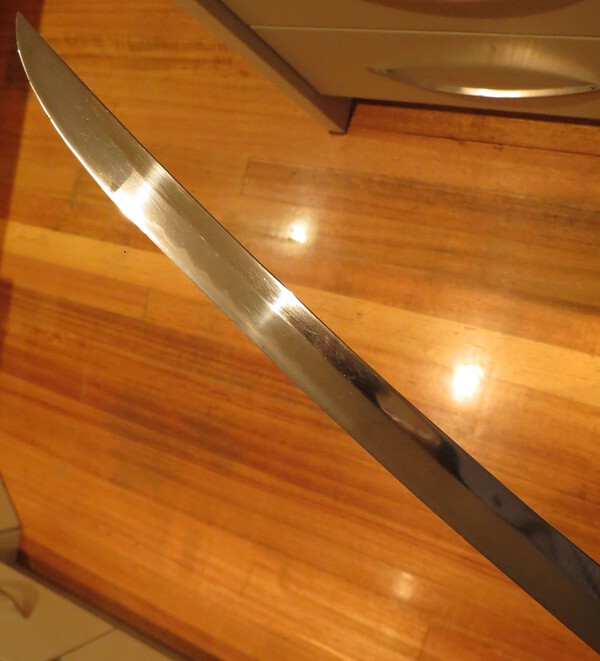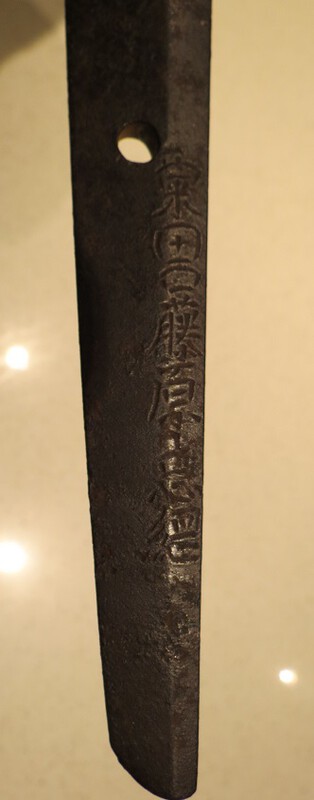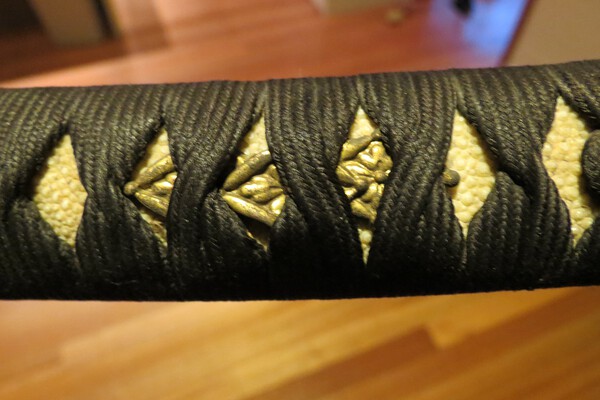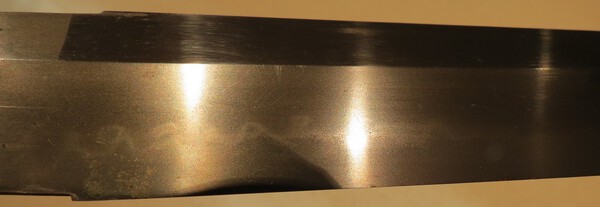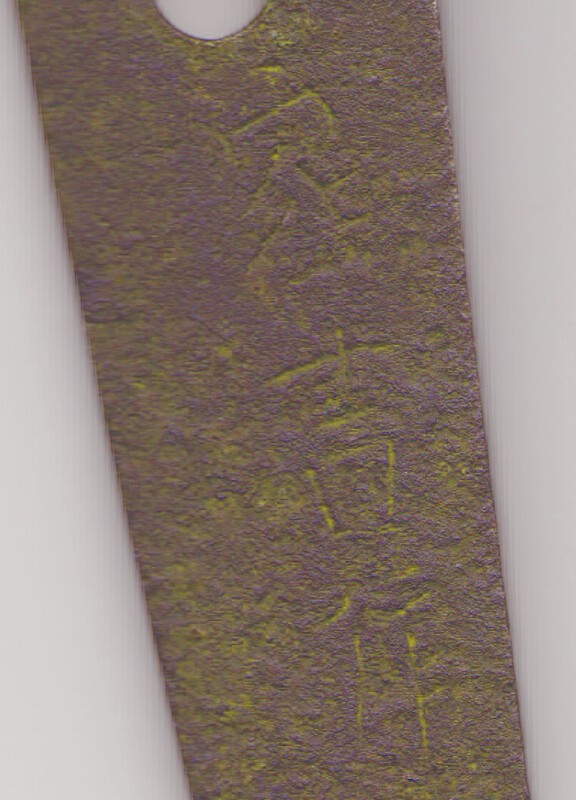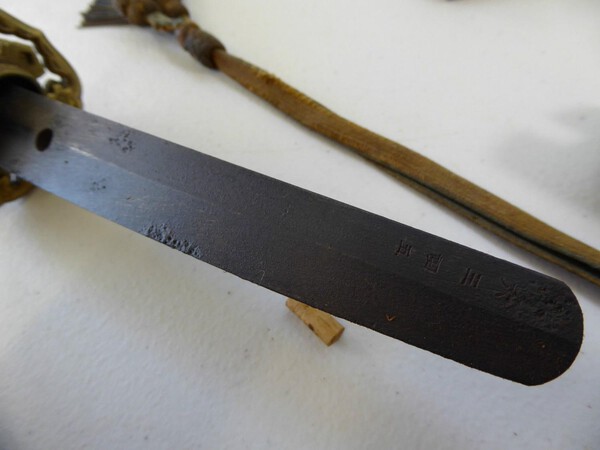
FletchSan
Members-
Posts
355 -
Joined
-
Last visited
-
Days Won
6
Content Type
Profiles
Forums
Events
Store
Downloads
Gallery
Everything posted by FletchSan
-
Customs Advice - Australia
FletchSan replied to FletchSan's topic in Auctions and Online Sales or Sellers
Update - its now hit a Customs verification hold status where apparently they can take up to 72 business hours to verify the item.... uggghhhhhhhhhh -
Customs Advice - Australia
FletchSan replied to FletchSan's topic in Auctions and Online Sales or Sellers
Thanks - the broker recommended the same tariff code 93070000 which is "normal swords". I'll let you know how long it takes to get through. I only went the broker route as when I called customs they told me it could take 10 days if I do it myself. I only paid $99 for a "3 hour turn-around" via ecustomsbroker.com.au which will be worth it if it saves me 2 weeks of hassle Ben -
Customs Advice - Australia
FletchSan replied to FletchSan's topic in Auctions and Online Sales or Sellers
Thanks. The broker cited this document as to the need for the certificate. Though, from my reading that just means you can import them duty free. I assume I just pay tax with no certificate but can still classify them as antiques. The recommendation is to classify them as "normal swords" - though this doesn't sound right to me and I dont want Aus Post thinking they are dangerous goods and refusing to handle them... https://www.border.gov.au/Factsheets/Documents/importingantiquesfactsheet.pdf Ben -
Hi All, I have a sword that has been sitting with customs for about a week though I didn't receive a letter for Aus Post re: paying duty on the item. I called customs and they emailed me the details that I needed to complete and I chose to go through an online broker. Apparently to classify the sword as antique they require that a "certificate of Antiquity issued by a recognised association or authority will need to be supplied". Has anyone come across this before as I've never received a certificate of antiquity with any sword purchased before. cheers, Ben
-
Thanks guys. The polish isn't great so a little hard to see hada and hamon.. The boshi is there but hard to photograph. I'll have a look at mino / shinshinto and see what comes up. cheers, Ben
-
Hi All, I have a mumei wakizashi with a fairly large kissaki and I would like thoughts on possible era and school. There are no flaws that I can see though there is some rust. Nagasa: 45.5cm Sori: 1.6cm Kissaki: 8.6cm Kasane: 0.6cm I assume Shinto or Shinshinto period blade. Is an okissaki fairly common across all schools or more favoured for a particular school? thanks, Ben
-
Thanks Jason. It would have been pretty amazing to be genuine though I didn't buy it for that possibility and really wanted it for the decent hamon and fine hada. I'm still taking it with me to see my local togishi next weekend and I'm sure he'll also confirm what everyone is saying I'll do a separate post for the katana that was also a sword brought back from ww2. This one is has a fairly rusty blade but a few interesting features and I'm hoping to get a window opened up. Its mumei however there are faint traces of a silver inscription on the nagako and the koshirae is original with the family mon on all fittings. cheers, Ben
-
I found this example which is papered though signed Awataguchi Omi no Kami Tadatsuna and attributed to the Shodai Tadatsuna. It is also a little off centre to the shinogi. http://nihontofrance.com/nihonto-2/tadatsuna-katana-2/?lang=en Ben
-
Thanks Jacques and Darcy. This image shows the shinogi more clearly and I can see the characters are a little offset vs centred. Amazing that a few mm can make all the difference! I'll continue my research and see what other examples I can find as that's a lot of fun gimei or not. I've compared it to one of the others I found which is closer in position though can't tell if that example is papered as I can't read the Japanese on the site. http://soushin-lab.co.jp/test20160126/soldout/201310-25.html I'm also visiting a local togishi soon and will take this sword along and let you know his thoughts. cheers, Ben
-
Thanks Steve, i hadn't considered searching for the Kanji - makes sense! I've compared a few - mine is the 3rd in the attached and its probably closest to this one (the 2nd one). http://winners-auction.jp/productDetail/53485 Ben
-
Thanks, I really like this sword and it seems to be a notch above my others in quality and the first time I've been able to clearly see & photograph the hada so easily. The fittings are average at best and seem thrown together - I assume some restoration job done some time ago. I'll do some research on Tadatsuna and compare the aspects of the blade with his work. I have only been able to find one example of the 1st gen mei with Fujiwara so far and the Markus Sesko Kantei book I have only has an example of the 2nd gen. Are there good online resources available for signature comparison? thanks, Ben
-
Thanks Grey - The mei isn't too dissimilar to this example. What do you think? http://www.sanmei.com/contents/media/N12962_W6940_PUP_E.htm
-
Hi All, I recently picked up two swords that were brought back from ww2. A rusty Katana with interesting original Koshirae and a Wakizashi with a pretty active hamon in nice condition. Neither have military fittings. I'd like thoughts on both swords, though will start with the Wakizashi in this post. Nagasa: 56cm Sori : 1.0cm Kasane: 0.5cm I'll let the pictures do the talking Interested in opinions - I'm pretty happy with it. cheers, Ben
-
Yes agree - though can't find too many other references to Ieyoshi. Was he a well enough known smith that someone would gimei or could this be an unknown Ieyoshi?
-
Thanks to Steve M for a rapid response in the translation section - the mei looks much closer to Ieyoshi 家吉.
-
Thanks Steve - That is very close actually, I think you have it!
-
Hi All, This relates to the sword in my other post. http://www.militaria.co.za/nmb/topic/19423-hira-zukuri-wakizashi-my-first-kantei-attempt/ I cannot make out the first character and have thought Yasu, Kore, Mori or Mune.... I used a hue / saturation filter to bring out the mei a little better which worked surprisingly well. cheers, Ben
-
Looking at examples of Sa Yasuyoshi mei - the first character looks nothing like Yasu. I wonder if it is Mori or Mune.... I'll post a better image in the translation forum and see if anyone can recognise it.
-
I've taken a few better photos of the boshi. I'm leaning towards notare-komi which is not similar to Sa Yasuyoshi which is a variation on Jizo.
-
Okay cool - is it unusual to have no serial # on the blade for an NCO sword and stamped numbers on the nagako? Also the patina on the nagako is a lot darker than I would have thought, most showato I've seen anyway have a much more subtle patina - though as I said not really familiar with NCO swords. Thanks all.
-
Yes - i would have thought that the sword is fake based on the nagako and flat mune and missing serial number and the Tsuka and maybe the Tsuba are original. The saya looks off to me as well - maybe aged? I swear I see the letter R at the top of the nagako as well
-
Ah okay - not too familiar with NCO blades. The nagako yasurimei and mei threw me.
-
Hi All, Pretty sure this is a chinese fake listed on Ebay though don't think the seller would be aware based on the description & reputation. Koshirae looks okay to me though nagako is very odd? http://www.ebay.com.au/itm/WW2-Japanese-SWORD-with-framed-silk-SURRENDER-TAG-Major-Takihara-/141974614540?hash=item210e58b20c:g:p8oAAOSwiYFXIcld Ben
-
Thanks Jim. I'll study up on the Chikuzen Sa School and also take a better photo of the boshi and compare it with Markus Sesko's reference. Great to see another Melbourne collector - shame we don't have a group that get together for some Kantei (not that I know of anyway). cheers, Ben
-
Okay - I couldn't resist and googled Yasuyoshi and found this example. Separated at birth? There are a few differences though... This image is from a Christies auction with the following description. I need the experts to step in now and put me out of my misery A Chikuzen Sa-School Wakizashi Nanbokucho period (14th century), with signature Choshu ju Yasuyoshi and dated Joji go hachi (1366. Sugata [configuration]: hira-zukuri, iori-mune with a wide mi-haba and slight curve Kitae [forging pattern]: o-itame in ji-nie with hada-dachi and chikei Hamon [tempering pattern]: notare-gunome mixed with choji of nie, with deep nioi, sunagashi and kin-suji Boshi [tip]: midare-komi, tsuki-age with a deep return and some haki-kake Horimono [carving]: bo-hi ni tsure-hi on both sides Nakago [tang]: ubu, slight kuri-jiri with three holes and suji-kai file marks Habaki [collar]: two-piece, gold Nagasa [length from tip to beginning of tang]: 13 5/8in. (34.4cm.) In shirasaya [wood storage scabbard] With Yushu bunkazai (Very important cultural asset) certificate no. 82 issued by the Nihon Tosogu Bijutsukan (Museum of Japanese Sword Fittings), dated 1999.6.1





